Volume 1-8 (2009-16)
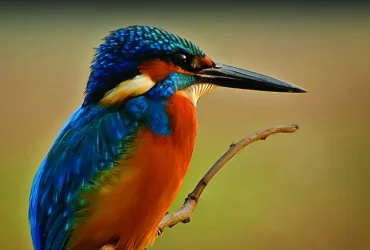 v7i4.195
v7i4.195ISSN: 1800-427X (print)
eISSN: 1800-427X (online)
DOI:10.47605/tapro.v7i4.195
Submitted date: 12 January 2015
Accepted date: 8 June 2015
Published date: 15 August 2015
Pp. 235–243, Pls. 5–6.
SPECIES DIVERSITY OF WETLAND BIRDS IN DRY ZONE SEASONAL RESERVOIRS IN SRI LANKA
Sujan M. Henkanaththegedara* & Upali S. Amarasinghe
*Corresponding author. E-mail: henkanaththegedarasm@longwood.edu
Abstract
The quantification of species diversity is essential in several aspects of ecology, including conservation biology, and as an indicator of the well-being of ecological systems. However, species diversity of the wetland birds in the seasonal reservoirs in the dry zone of Sri Lanka has received very little attention. In the present study, an attempt was made to determine the species diversity of wetland birds of 20 seasonal reservoirs in Anuradhapura and Monaragala Districts during both migratory and non-migratory seasons. A total of 46 species of aquatic birds belonging to 17 families (represent 7 orders) were recorded during the present study in selected seasonal reservoirs in the two districts. Overall, both bird species richness and abundance were higher in Anuradhapura district compared to Monaragala District. However, there were more bird species in both districts during migratory seasons. We have detected significant seasonal differences in species diversity estimated by both the Shannon-Wiener Index (F=3.926; P <0.1) and Simpson’s Index (F=3.718; P <0.1). This suggests that there was a significantly higher diversity of wetland birds during the migratory season. Species-area relationships suggested that the species richness of wetland birds associated with seasonal reservoirs would increase as the reservoir size increases. However, these relationships represented weak correlations (R2 range = 0.331–0.645). Overall our study indicates that seasonal reservoirs in Sri Lanka support a diverse community of wetland birds and provide a strong example for a case of enhancement of biological diversity through human activities by creating artificial habitats.
Key words : Anuradhapura, aquatic birds, avifaunal diversity, Monaragala, species-area relationship
Section Editor: Varadharajan Gokula
eISSN: 1800-427X (online)
DOI:10.47605/tapro.v7i4.195
Submitted date: 12 January 2015
Accepted date: 8 June 2015
Published date: 15 August 2015
Pp. 235–243, Pls. 5–6.
SPECIES DIVERSITY OF WETLAND BIRDS IN DRY ZONE SEASONAL RESERVOIRS IN SRI LANKA
Sujan M. Henkanaththegedara* & Upali S. Amarasinghe
*Corresponding author. E-mail: henkanaththegedarasm@longwood.edu
Abstract
The quantification of species diversity is essential in several aspects of ecology, including conservation biology, and as an indicator of the well-being of ecological systems. However, species diversity of the wetland birds in the seasonal reservoirs in the dry zone of Sri Lanka has received very little attention. In the present study, an attempt was made to determine the species diversity of wetland birds of 20 seasonal reservoirs in Anuradhapura and Monaragala Districts during both migratory and non-migratory seasons. A total of 46 species of aquatic birds belonging to 17 families (represent 7 orders) were recorded during the present study in selected seasonal reservoirs in the two districts. Overall, both bird species richness and abundance were higher in Anuradhapura district compared to Monaragala District. However, there were more bird species in both districts during migratory seasons. We have detected significant seasonal differences in species diversity estimated by both the Shannon-Wiener Index (F=3.926; P <0.1) and Simpson’s Index (F=3.718; P <0.1). This suggests that there was a significantly higher diversity of wetland birds during the migratory season. Species-area relationships suggested that the species richness of wetland birds associated with seasonal reservoirs would increase as the reservoir size increases. However, these relationships represented weak correlations (R2 range = 0.331–0.645). Overall our study indicates that seasonal reservoirs in Sri Lanka support a diverse community of wetland birds and provide a strong example for a case of enhancement of biological diversity through human activities by creating artificial habitats.
Key words : Anuradhapura, aquatic birds, avifaunal diversity, Monaragala, species-area relationship
Section Editor: Varadharajan Gokula
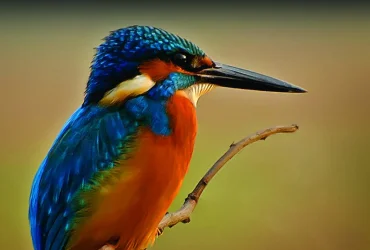 v7i4.194
v7i4.194ISSN: 1800-427X (print)
eISSN: 1800-427X (online)
DOI:10.47605/tapro.v7i4.194
Submitted date: 31 December 2014
Accepted date: 27 July 2015
Published date: 15 August 2015
Pp. 224–234.
AN INVERTEBRATE PERSPECTIVE TO HUTCHINSON’S RATIO USING CO-OCCURRING TIGER BEETLE (COLEOPTERA: CICINDELIDAE) ASSEMBLAGES
Chandima Deepani Dangalle* & Nirmalie Pallewatta
*Corresponding author. E-mail: cddangalle@gmail.com
Abstract
Tiger beetles co-occur for cryptic advantage, interspecific hybridization, reproductive synchrony and thermoregulation. Successful co-occurrence relies on the absence of competition and Hutchinson (1959) has proposed body size ratios for co-occurrence of bird and mammal taxa. The present study calculates body size ratios for co-occurring tiger beetle assemblages and investigates similarities with ratios for co-occurring birds and mammals. Ratios obtained using measurements of different morphological characters are considered and compared. Association of body size ratios of co-occurring tiger beetles with habitat type and number of species in co-occurring tiger beetle assemblage are determined. The study revealed a body weight ratio and body length ratio for co-occurring tiger beetles that was similar to Hutchinson’s ratios for birds and mammals. Different ratios were obtained when using different morphological parameters. Body size ratios inferred using mandible lengths differed significantly according to habitat type. Further, relatively higher values were observed for assemblages occupying terrestrial habitats while lower values were found for assemblages of aquatic habitats.
Key words : body size, competition, morphology, habitat type, Sri Lanka
Section Editor: Jörg Gebert
eISSN: 1800-427X (online)
DOI:10.47605/tapro.v7i4.194
Submitted date: 31 December 2014
Accepted date: 27 July 2015
Published date: 15 August 2015
Pp. 224–234.
AN INVERTEBRATE PERSPECTIVE TO HUTCHINSON’S RATIO USING CO-OCCURRING TIGER BEETLE (COLEOPTERA: CICINDELIDAE) ASSEMBLAGES
Chandima Deepani Dangalle* & Nirmalie Pallewatta
*Corresponding author. E-mail: cddangalle@gmail.com
Abstract
Tiger beetles co-occur for cryptic advantage, interspecific hybridization, reproductive synchrony and thermoregulation. Successful co-occurrence relies on the absence of competition and Hutchinson (1959) has proposed body size ratios for co-occurrence of bird and mammal taxa. The present study calculates body size ratios for co-occurring tiger beetle assemblages and investigates similarities with ratios for co-occurring birds and mammals. Ratios obtained using measurements of different morphological characters are considered and compared. Association of body size ratios of co-occurring tiger beetles with habitat type and number of species in co-occurring tiger beetle assemblage are determined. The study revealed a body weight ratio and body length ratio for co-occurring tiger beetles that was similar to Hutchinson’s ratios for birds and mammals. Different ratios were obtained when using different morphological parameters. Body size ratios inferred using mandible lengths differed significantly according to habitat type. Further, relatively higher values were observed for assemblages occupying terrestrial habitats while lower values were found for assemblages of aquatic habitats.
Key words : body size, competition, morphology, habitat type, Sri Lanka
Section Editor: Jörg Gebert
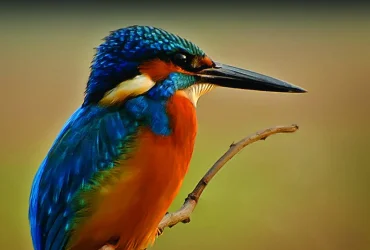 v7i4.193
v7i4.193ISSN: 1800-427X (print)
eISSN: 1800-427X (online)
DOI:10.47605/tapro.v7i4.193
Submitted date: 7 October 2014
Accepted date: 2 February 2015
Published date: 15 August 2015
Pp. 219–223.
THE DIVERSITY OF TRUE DUNG BEETLES (COLEOPTERA: SCARABAEIDAE) IN LARGE MAMMAL DUNG WITHIN THE WASGOMUWA NATIONAL PARK, SRI LANKA
Dishane K. Hewavithana*, Mayuri R. Wijesinghe, Chandima D. Dangalle, Deepachandi Lekamge & C. de Alwis
*Corresponding author. E-mail: dishanehewavithana@gmail.com
Abstract
This paper reports the species richness and abundance of true dung beetles (Family Scarabaeidae: subfamily Scarabaeinae) in the Wasgomuwa National Park, Sri Lanka. This survey was conducted during the prolonged dry season using active and passive methods of sampling and revealed the presence of 25 species (637 individuals), including one endemic, Onthophagus martialis, representing eight genera. This finding is interesting as it suggests the possibility that this forest is equally as rich in dung beetles as forests of the wet zone reported by others. There was considerable disparity in abundance among the genera and species. The best represented genus was Onthophagus with a total of 16 species, whilst the most common species, with 159 individuals, was O. pygmaeus. All dung beetle species were unevenly distributed within the park. The information generated on this ecologically important group can be used to determine the true conservation value of the dry zone protected areas.
Key words : Abundance, occurrence, Onthophagus, Scarabaeinae, species richness
Section Editor: Oliver Hillert
eISSN: 1800-427X (online)
DOI:10.47605/tapro.v7i4.193
Submitted date: 7 October 2014
Accepted date: 2 February 2015
Published date: 15 August 2015
Pp. 219–223.
THE DIVERSITY OF TRUE DUNG BEETLES (COLEOPTERA: SCARABAEIDAE) IN LARGE MAMMAL DUNG WITHIN THE WASGOMUWA NATIONAL PARK, SRI LANKA
Dishane K. Hewavithana*, Mayuri R. Wijesinghe, Chandima D. Dangalle, Deepachandi Lekamge & C. de Alwis
*Corresponding author. E-mail: dishanehewavithana@gmail.com
Abstract
This paper reports the species richness and abundance of true dung beetles (Family Scarabaeidae: subfamily Scarabaeinae) in the Wasgomuwa National Park, Sri Lanka. This survey was conducted during the prolonged dry season using active and passive methods of sampling and revealed the presence of 25 species (637 individuals), including one endemic, Onthophagus martialis, representing eight genera. This finding is interesting as it suggests the possibility that this forest is equally as rich in dung beetles as forests of the wet zone reported by others. There was considerable disparity in abundance among the genera and species. The best represented genus was Onthophagus with a total of 16 species, whilst the most common species, with 159 individuals, was O. pygmaeus. All dung beetle species were unevenly distributed within the park. The information generated on this ecologically important group can be used to determine the true conservation value of the dry zone protected areas.
Key words : Abundance, occurrence, Onthophagus, Scarabaeinae, species richness
Section Editor: Oliver Hillert
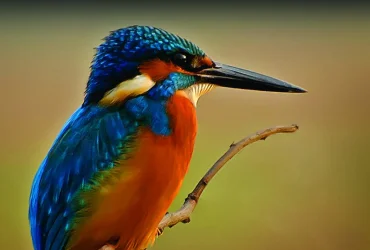 v7i4.192
v7i4.192ISSN: 1800-427X (print)
eISSN: 1800-427X (online)
DOI:10.47605/tapro.v7i4.192
Submitted date: 7 October 2014
Accepted date: 7 April 2015
Published date: 15 August 2015
Pp. 213–218, Pl. 1–4.
A NEW SCORPION OF THE GENUS Buthoscorpio WERNER, 1936 (SCORPIONES: BUTHIDAE) FROM KERALA, INDIA
K. Aswathi*, P.M. Sureshan & Wilson R. Lourenco
*Corresponding author. E-mail: aswathik101@gmail.com
Abstract
A new scorpion species of the genus Buthoscorpio Werner, 1936 is described from Chinnar Wildlife Sanctuary, Idukki District, Kerala, India. The new species, Buthoscorpio chinnarensis can be distingued from the other congeners by having (1) carapace with scattered granulation on lateral portions; (2) median eyes situated anteriorly in the ratio 1:2; (3) prominent tubercles present at the basal portion of the pedipalp femur; (4) marginal lamellae of pectines composed of three pieces and middle lamellae comprises seven pieces of sclerites; (5) dorsal carinae present on metasomal segments III–V; (6) subaculear tubercle absent on telson; (7) Pectinal teeth count 14/16 (female paratypes with 17/17 and 16/17 respectively); (8) Metasomal segments I–IV wider than long, segment V longer than wide; (9) arrangement of lateral eyes. After the description of this new species, the total number of known species in the genus is raised to five; four in India and one in Sri Lanka.
Key words : Chinnar Wildlife Sanctuary, Sri Lanka, taxonomy, Western Ghats
Section Editor: Erich Volschenk
eISSN: 1800-427X (online)
DOI:10.47605/tapro.v7i4.192
Submitted date: 7 October 2014
Accepted date: 7 April 2015
Published date: 15 August 2015
Pp. 213–218, Pl. 1–4.
A NEW SCORPION OF THE GENUS Buthoscorpio WERNER, 1936 (SCORPIONES: BUTHIDAE) FROM KERALA, INDIA
K. Aswathi*, P.M. Sureshan & Wilson R. Lourenco
*Corresponding author. E-mail: aswathik101@gmail.com
Abstract
A new scorpion species of the genus Buthoscorpio Werner, 1936 is described from Chinnar Wildlife Sanctuary, Idukki District, Kerala, India. The new species, Buthoscorpio chinnarensis can be distingued from the other congeners by having (1) carapace with scattered granulation on lateral portions; (2) median eyes situated anteriorly in the ratio 1:2; (3) prominent tubercles present at the basal portion of the pedipalp femur; (4) marginal lamellae of pectines composed of three pieces and middle lamellae comprises seven pieces of sclerites; (5) dorsal carinae present on metasomal segments III–V; (6) subaculear tubercle absent on telson; (7) Pectinal teeth count 14/16 (female paratypes with 17/17 and 16/17 respectively); (8) Metasomal segments I–IV wider than long, segment V longer than wide; (9) arrangement of lateral eyes. After the description of this new species, the total number of known species in the genus is raised to five; four in India and one in Sri Lanka.
Key words : Chinnar Wildlife Sanctuary, Sri Lanka, taxonomy, Western Ghats
Section Editor: Erich Volschenk
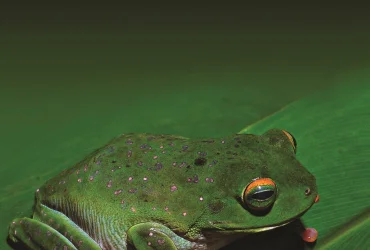 v5i2.119
v5i2.119ISSN: 1800-427X (print)
eISSN: 1800-427X (online)
DOI:10.47605/tapro.v5i2.119
Submitted date: 8 July 2012
Accepted date: 22 November 2013
Published date: 25 December 2013
Pp. 157–162.
Phenotype evaluation of free-ranging European mouflon
M.R. Frisina* & R.M. Frisina
*Corresponding author. E-mail: mike.frisina@montana.edu
Since introduced to Lanai in 1954, European mouflon have been as controversial as feral domestic sheep, sheep hybrids, and mouflon introduced to other Isands in the Hawaiian Archipelago. To conservationists concerned with the impacts to native flora and fauna European mouflon are an introduced ungulate pest that needs to be eliminated to avoid degradation of the native environment and indigenous wild species. On the other hand European mouflon are considered a highly valued species for recreational and trophy hunting and in some locations, like Lanai, are important economically in a difficult economy. Many residents of Lanai value the recreational hunting of mouflon on the 14,000 ha Lanai public game management area. Mouflon also are an appreciated source of protein to some residents of Lanai. Providing locals with a recreational source of meat was one of the reasons for introducing mouflon. While controversial, mouflon have a strong contingent that advocates for their existence. Because the mouflon on Lanai are free ranging with no fenced populations, trophy hunters consider the Lanai mouflon a potential source of “phenotypically true” sheep suitable for inclusion in many different trophy records. As a result, in October 2011 we surveyed mouflon to determine if the Lanai population exhibited the physical characteristics typical of European mouflon as reported in the literature.
Section Editor: Colin P. Groves
eISSN: 1800-427X (online)
DOI:10.47605/tapro.v5i2.119
Submitted date: 8 July 2012
Accepted date: 22 November 2013
Published date: 25 December 2013
Pp. 157–162.
Phenotype evaluation of free-ranging European mouflon
M.R. Frisina* & R.M. Frisina
*Corresponding author. E-mail: mike.frisina@montana.edu
Since introduced to Lanai in 1954, European mouflon have been as controversial as feral domestic sheep, sheep hybrids, and mouflon introduced to other Isands in the Hawaiian Archipelago. To conservationists concerned with the impacts to native flora and fauna European mouflon are an introduced ungulate pest that needs to be eliminated to avoid degradation of the native environment and indigenous wild species. On the other hand European mouflon are considered a highly valued species for recreational and trophy hunting and in some locations, like Lanai, are important economically in a difficult economy. Many residents of Lanai value the recreational hunting of mouflon on the 14,000 ha Lanai public game management area. Mouflon also are an appreciated source of protein to some residents of Lanai. Providing locals with a recreational source of meat was one of the reasons for introducing mouflon. While controversial, mouflon have a strong contingent that advocates for their existence. Because the mouflon on Lanai are free ranging with no fenced populations, trophy hunters consider the Lanai mouflon a potential source of “phenotypically true” sheep suitable for inclusion in many different trophy records. As a result, in October 2011 we surveyed mouflon to determine if the Lanai population exhibited the physical characteristics typical of European mouflon as reported in the literature.
Section Editor: Colin P. Groves
Hubungi Kami
The ultimate aim of the journal is to provide an effective medium for communication of the latest and best scientific information.
Copyright © 2020 Taprobanica. All Rights Reserved
Jasa Pembuatan Website by IKT




